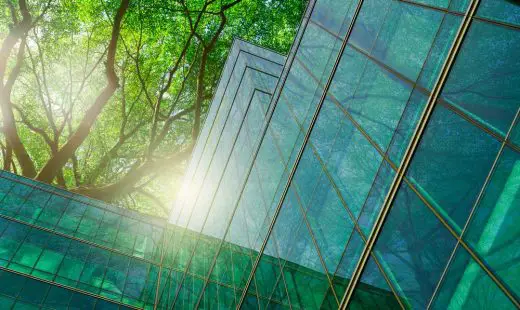Efficiency and sustainability: lighting as a service for modern architectural spaces, Building site tips, Property contractor advice
Efficiency and Sustainability: Lighting as a Service
15 June 2023
Ever walked into a room and been completely captivated by the lighting? It’s no secret that the right lighting can transform a space. But did you know that how we light up architectural spaces is undergoing a radical shift?
Welcome to the world of Lighting as a Service (LaaS). It’s a relatively new concept, making waves in the field of architecture. With LaaS, you can enhance your space’s aesthetics, achieve energy efficiency, and contribute to sustainability, all without the hefty upfront costs.
What exactly is LaaS, and how does it fit into modern architecture? Let’s explore how this innovative model is reshaping our approach to lighting and design.
What is Lighting As A Service?
Lighting as a Service (LaaS) isn’t merely about providing smarter lighting—it’s a comprehensive service that is revolutionising the way we manage and approach lighting in its entirety. With LaaS, providers offer ‘lighting’ as an ongoing service under a subscription model. This includes everything from the design and equipment to installation and maintenance, even covering the electricity costs.
For example, imagine running a high-rise office building. Instead of worrying about sourcing, installing and maintaining thousands of light bulbs, you could work with a LaaS provider who will manage all lighting-related matters for you.
In essence, the LaaS provider takes responsibility for your lighting needs, making sure your space is always well-lit with the most advanced and efficient lighting technologies available. It’s like having a lighting expert on your team without the need to hire one.
The Power Of Energy Efficiency With LaaS
The strength of LaaS lies in its ability to encourage the use of energy-efficient lighting technologies like light emitting diode (LED) and smart controls. Consider LEDs, for example, which can produce light with up to 90% greater efficiency compared to traditional incandescent bulbs.
Now, think of the savings that could be made if an entire building switched from traditional bulbs to LEDs under a LaaS model. It’s not just about reducing costs but also contributing to a more sustainable future.
Financial Flexibility Of LaaS
One of the great advantages of LaaS is the financial flexibility it offers. Traditional lighting systems can require significant upfront expenditure, but with LaaS, these costs are spread out over time within the subscription fee.
Think of it as a pay-as-you-go model for your lighting, freeing up capital that can be invested elsewhere in your business. This makes LaaS not only an innovative solution but also a financially astute choice.
Harnessing Technological Advancements Through LaaS
LaaS isn’t just about saving money; it’s also about leveraging the latest technology. Imagine having lighting systems that integrate with the Internet of Things (IoT), providing remote control over every light in a building, or automated systems that adjust lighting levels based on the natural light available.
For instance, imagine a busy office where lights automatically dim when there’s ample sunlight or a retail store where lighting settings change to highlight different displays—all these can be made possible with advanced LaaS systems integrated with IoT.
These technologies enhance the functionality of lighting systems and make them more adaptable, all while contributing to energy conservation.
LaaS And Sustainability: A Perfect Union
LaaS is much more than an innovative business model—it’s a crucial part of a sustainable future. A core component of LaaS is the focus on utilising energy-efficient lighting technologies.
This move reduces the power consumption of buildings, which are known to be significant consumers of energy globally. The consequent reduction in energy use has a direct positive impact on a building’s carbon footprint, a critical factor in mitigating the effects of climate change.
Moreover, the LaaS model promotes the use of long-lasting light fixtures, reducing the waste associated with frequently replacing traditional bulbs. Additionally, when a lighting upgrade is needed, the service provider usually takes responsibility for the disposal of old fixtures, ensuring that it’s done in an environmentally responsible way.
The Future Is Bright: Upcoming Trends In LaaS
The future of LaaS holds significant potential, spurred by technological advancements in the lighting and IoT industry.
Firstly, the integration of artificial intelligence (AI) into LaaS will likely enhance the energy efficiency and customisation possibilities of lighting systems. AI can facilitate ‘learning’ from usage patterns, allowing systems to provide optimal lighting while consuming minimal energy. Imagine a system where AI can analyse the usage patterns and automatically adjust the lighting to optimise energy use.
Secondly, the growth of smart cities is another trend that bodes well for the expansion of LaaS. As cities become more interconnected, there’s a growing need for efficient and controllable lighting systems. Imagine smart city infrastructure where streetlights can be managed remotely using IoT technologies. LaaS, with its combination of energy efficiency and smart control, is perfectly poised to meet this demand.
Lastly, as the emphasis on sustainability continues to grow, green building certifications like Leadership in Energy and Environmental Design (LEED) and Building Research Establishment’s Environmental Assessment Method (BREEAM), especially significant in the UK, are becoming increasingly important. LaaS, with its inherent focus on energy efficiency and reduced waste, can be a key contributing factor in achieving these certifications.
As we step into the future, LaaS is well-positioned to lead the way towards more efficient, sustainable, and technologically advanced lighting in architectural spaces.
Efficiency And Sustainability: Lighting As A Service Conclusion
Lighting as a Service is leading the way in sustainable innovation. It isn’t merely a clever financial solution. It serves as a transformative force, making architectural lighting greener and more efficient. LaaS has a bright future, particularly as an attractive solution for architects, building owners, and facility managers.
As we move forward, LaaS is set to play an even bigger role. The rise of smart cities and the ongoing advancement of AI and IoT technologies will see the LaaS landscape continue to evolve and innovate.
So, whether you’re an architect, a building manager, or just someone passionate about sustainability and efficiency, LaaS offers a compelling example of how we can enhance the illumination of our modern architectural spaces. Adopting it is not just a step towards sustainable, efficient, and advanced lighting solutions but can contribute toward a future that truly brightens our world.
Comments on this Efficiency And Sustainability: Lighting As A Service (LaaS) For Modern Architectural Spaces article are welcome.
Lighting Design
Outdoor Lighting Building Design
Outdoor lighting complements patio design
Outdoor lighting ultimate guide
Electrical services for outdoor lighting ideas
Building Design
Architecture
Comments / photos for the Efficiency And Sustainability: Lighting As A Service (LaaS) For Modern Architectural Spaces page welcome






